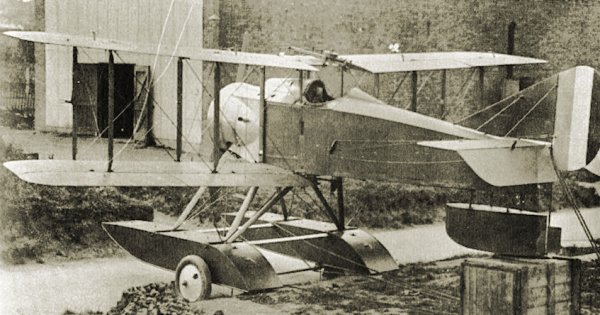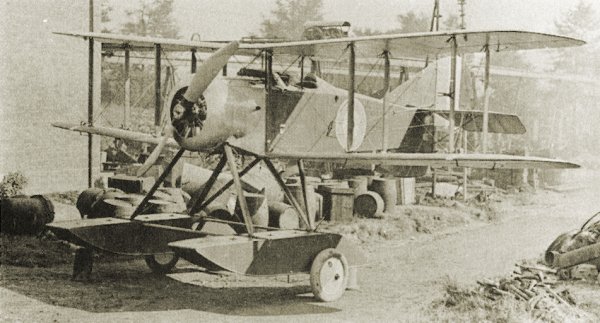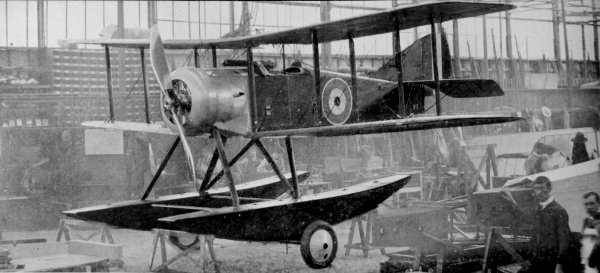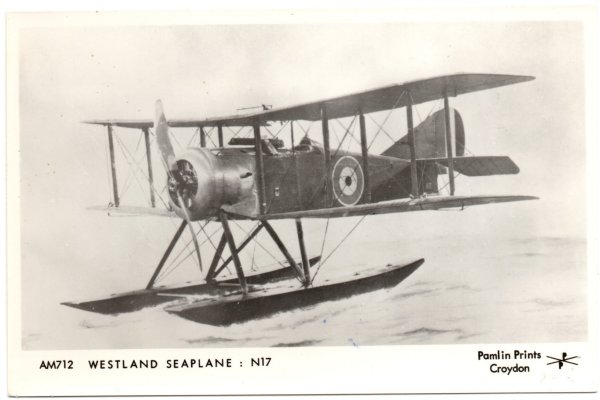Westland N.1B
Westland N.1B
Single-seat Tractor Seaplane Scout
The Westland N.1B was a prototype British single-engine floatplane fighter aircraft of the First World War. The first aircraft to be designed by Westland Aircraft, it was a single-engine tractor biplane. Despite good performance, only two aircraft were built, the Royal Naval Air Service operating landplane fighters from ships instead.
In 1916, the British Admiralty drew up Requirement N.1B for a single-seat floatplane or flying boat fighter aircraft to operate from the Royal Navy's seaplane carriers, demanding a speed of 110 mph (177 km/h) and a ceiling of 20,000 ft (6,100 m). Three companies submitted designs in response, Blackburn and Supermarine with flying boats (the Blackburn N.1B and Supermarine Baby), while Westland proposed a floatplane, the Westland N.1B. Westland received an order for two aircraft.
Westland's design, which was the first original design built by Westland, was a single-engine tractor biplane of wooden construction. It had a deep fuselage, while its two-bay wings were designed to fold to save space on ship, and were fitted with trailing-edge flaps. It was powered by a single Bentley A.R.1 rotary engine (later known as the BR1) and carried a single synchronised forward-firing Vickers machine gun on the nose, and a Lewis gun firing over the upper wing. The first N.1B was fitted with 11 ft (3.35 m) long Sopwith main floats and a 5 ft (1.52 m) long tail float, while the second N.1B had much longer (17 ft 6 in (5.34 m) main floats, which removed the need for a tail float.
The first N.1B,
serial number
N16 was first
flown by Harry
Hawker from
Westland's
Yeovil factory
in August 1917.
The two N.1Bs
were evaluated
at the Port
Victoria Marine
Experimental
Aircraft Depot
in October 1917,
demonstrating
good performance
and handling. By
this time,
however, the
Royal Naval Air
Service was
operating
Sopwith Pup
landplanes from
flying-off
platforms aboard
ships, which did
not require the
carrier to
heave-to in
order to lower a
seaplane to the
water, and was
planning to
carry out
similar
operations with
the Sopwith
Camel, and the
N.1B programme
was cancelled
![]()
| General characteristics | |
| Crew: | One |
| Length: | 26 ft 5½ in (8.07 m) |
| Wingspan: | 31 ft 3½ in (9.54 m) |
| Height: | 11 ft 2 in (3.40 m) |
| Wing area: | 278 ft² (25.8 m²) |
| Empty weight: | 1,513 lb (688 kg) |
| Loaded weight: | 1,987 lb (903 kg) |
| Powerplant: | 1 × Bentley A.R.1 9-cylinder rotary engine, 150 hp (112 kW) |
| Performance | |
| Maximum speed: | 107 mph (93 knots, 172 km/h) at sea level |
| Service ceiling: | 10,400 ft (3,200 m) |
| Endurance: | 2¾ hours |
| Climb to 5,000 ft (1,520 m): | 10 min |
| Armament | |
| Guns: | 1x forward firing, synchronised .303 in Vickers machine gun |
| 1 x Lewis gun above upper wing | |
| Bombs: | 2 x 65 lb (30 kg) bombs on racks under fuselage |
| Production | |
| Two prototypes built during 1916-17. |
All the above text based on / 'borrowed' from Wikipedia.
gallery

N16, the first N.1B, with a tail float and a humped cowl over the Vickers machine-gun.

.... and a front three-quarter view of N16.

N17, the second N.1B, had longer floats and a modified engine cowling.

From my
collection
A postcard of the Westland N17 on water.